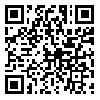
International Journal of Industrial Engineering & Production Research
Iran University of Science & Technology
Mon, Dec 15, 2025
[Archive]
Volume 23, Issue 1 (IJIEPR 2012)
IJIEPR 2012, 23(1): 45-52 |
Back to browse issues page
Download citation:
BibTeX | RIS | EndNote | Medlars | ProCite | Reference Manager | RefWorks
Send citation to:



BibTeX | RIS | EndNote | Medlars | ProCite | Reference Manager | RefWorks
Send citation to:
Moradi B, Shakeri H, NamdarZangeneh S. Solving the Paradox of Multiple IRR's in Engineering Economic Problems by Choosing an Optimal -cut. IJIEPR 2012; 23 (1) :45-52
URL: http://ijiepr.iust.ac.ir/article-1-412-en.html
URL: http://ijiepr.iust.ac.ir/article-1-412-en.html
1- Alzahra University
2- Amirkabir University of Technology
3- Faculty member of Industrial Engineering Department, Alzahra University ,szangeneh@alzahra.ac.ir
2- Amirkabir University of Technology
3- Faculty member of Industrial Engineering Department, Alzahra University ,
Abstract: (18895 Views)
Until now single values of IRR are traditionally used to estimate the time value of cash flows. Since uncertainty exists in estimating cost data, the resulting decision may not be reliable. The most commonly cited drawbacks to using the internal rate of return in evaluatton of deterministic cash flow streams is the possibility of multiple conflicting internal rates of return. In this paper we present a fuzzy methodology for solving problems of multiple IRR in any type of streams. Utilization of fuzzy cash flow allows modeling of uncertainty in estimating cost data. The approach of
Type of Study: Research |
Subject:
Other Related Subject
Received: 2012/03/3 | Published: 2012/03/15
Received: 2012/03/3 | Published: 2012/03/15
Send email to the article author
| Rights and permissions | |
 | This work is licensed under a Creative Commons Attribution-NonCommercial 4.0 International License. |



